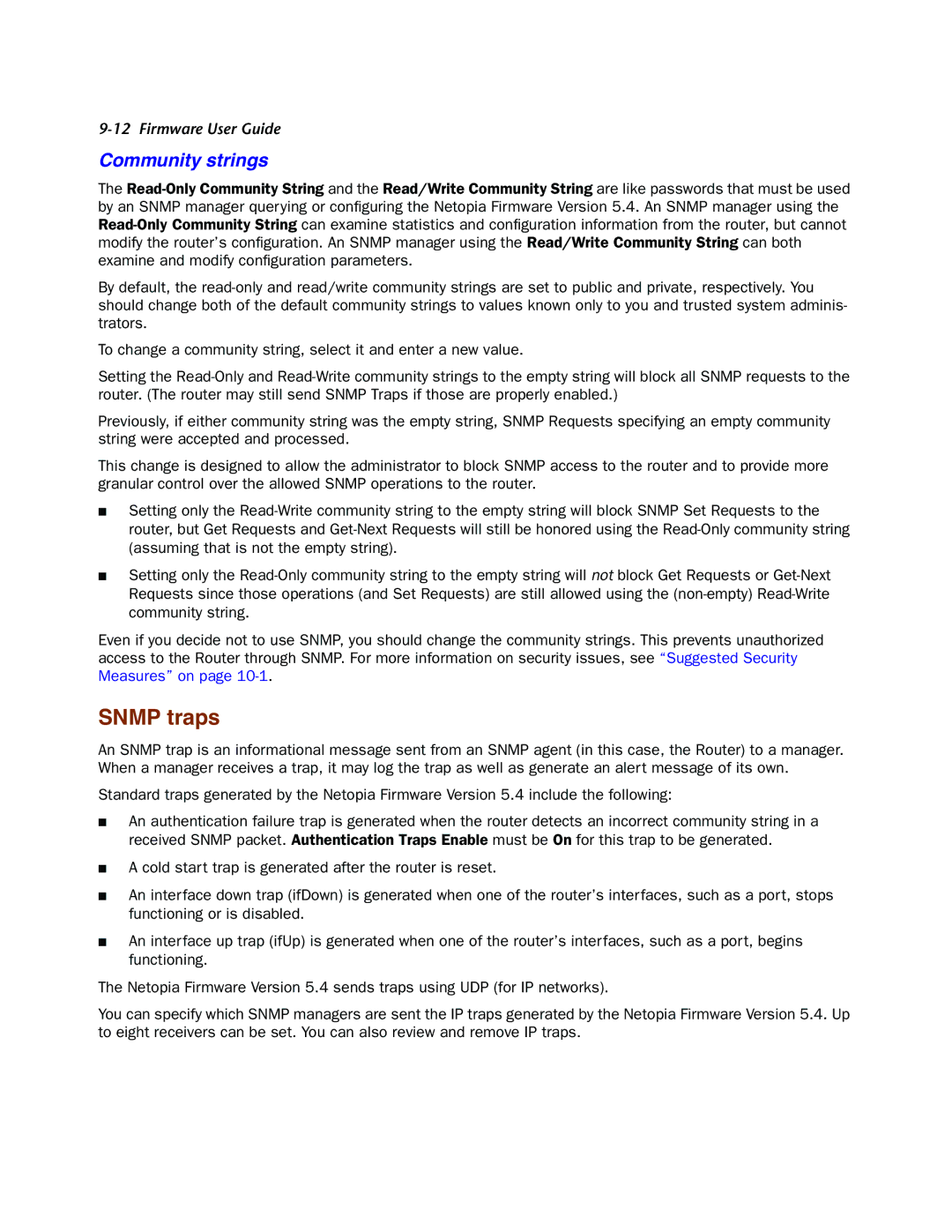9-12 Firmware User Guide
Community strings
The
By default, the
To change a community string, select it and enter a new value.
Setting the
Previously, if either community string was the empty string, SNMP Requests specifying an empty community string were accepted and processed.
This change is designed to allow the administrator to block SNMP access to the router and to provide more granular control over the allowed SNMP operations to the router.
■Setting only the
■Setting only the
Even if you decide not to use SNMP, you should change the community strings. This prevents unauthorized access to the Router through SNMP. For more information on security issues, see “Suggested Security Measures” on page
SNMP traps
An SNMP trap is an informational message sent from an SNMP agent (in this case, the Router) to a manager. When a manager receives a trap, it may log the trap as well as generate an alert message of its own.
Standard traps generated by the Netopia Firmware Version 5.4 include the following:
■An authentication failure trap is generated when the router detects an incorrect community string in a received SNMP packet. Authentication Traps Enable must be On for this trap to be generated.
■A cold start trap is generated after the router is reset.
■An interface down trap (ifDown) is generated when one of the router’s interfaces, such as a port, stops functioning or is disabled.
■An interface up trap (ifUp) is generated when one of the router’s interfaces, such as a port, begins functioning.
The Netopia Firmware Version 5.4 sends traps using UDP (for IP networks).
You can specify which SNMP managers are sent the IP traps generated by the Netopia Firmware Version 5.4. Up to eight receivers can be set. You can also review and remove IP traps.
